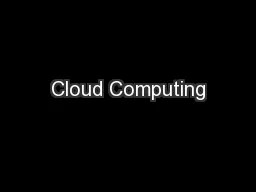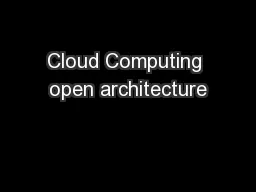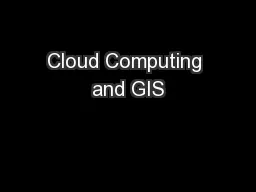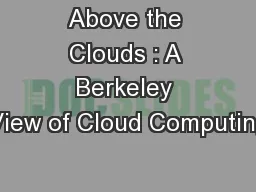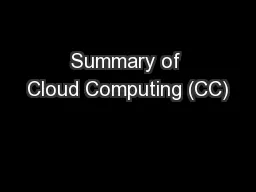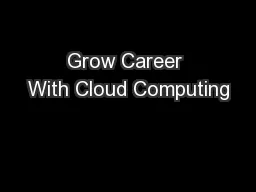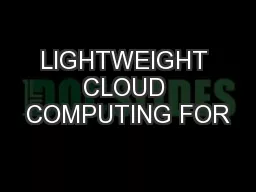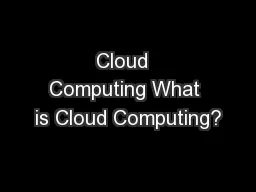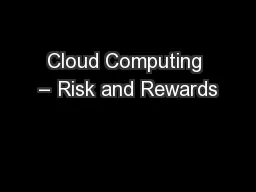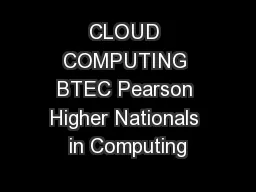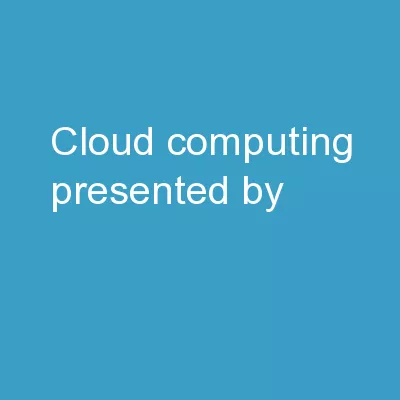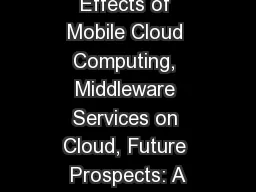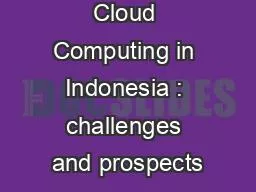PPT-Cloud Computing
Author : natalia-silvester | Published Date : 2015-09-22
An InDepth Discussion Introductions Nathaniel Gates President of Cloud49 Anchorage AK Nathaniel Gates is a lifelong Alaskan who understands the unique challenges
Presentation Embed Code
Download Presentation
Download Presentation The PPT/PDF document "Cloud Computing" is the property of its rightful owner. Permission is granted to download and print the materials on this website for personal, non-commercial use only, and to display it on your personal computer provided you do not modify the materials and that you retain all copyright notices contained in the materials. By downloading content from our website, you accept the terms of this agreement.
Cloud Computing: Transcript
Download Rules Of Document
"Cloud Computing"The content belongs to its owner. You may download and print it for personal use, without modification, and keep all copyright notices. By downloading, you agree to these terms.
Related Documents

